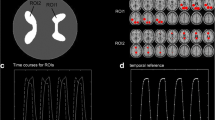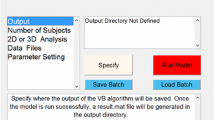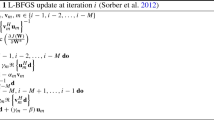Abstract
Methods for testing and validating independent component analysis (ICA) results in fMRI are growing in importance as the popularity of this model for studying brain function increases. We introduce and apply a synthesis/analysis model for analyzing functional Magnetic Resonance Imaging (fMRI) data using ICA. Classes of signal types relevant to fMRI are described and a statistical approach for validation of simulation results is developed. Additionally, we propose an empirical version of our validation approach to test the performance of various ICA approaches in “hybrid” fMRI data, a mixture of real fMRI data and known (validatable) sources. The synthesis portion of the model assumes statistically independent spatial sources in the brain. We also assume that the fMRI scanner acquires overdetermined data such that there are more time points than hemodynamic brain sources. We propose several signal classes relevant to fMRI and discuss the properties of each. The analysis portion of the model includes several candidates for spatial smoothing, ICA algorithm, and data reduction. We use the Kullback-Leibler divergence between the estimated source distributions and the “true” distributions as a measure of the optimality of the final ICA decomposition. Using this model, we generate fMRI-like data and optimize the analysis stage as a function of ICA algorithm, data reduction scheme, and spatial smoothing. An example of how our synthesis/analysis model can be used in validating an fMRI experiment is demonstrated using simulations and “hybrid” fMRI data.
Similar content being viewed by others
References
S. Ogawa, D.W. Tank, R. Menon, J.M. Ellermann, S.G. Kim, H. Merkle, and K. Ugurbil, “Intrinsic Signal Changes Accompanying Sensory Stimulation: Functional Brain Mapping With Magnetic Resonance Imaging,” Proc. Natl. Acad. Sci., vol. 89, 1992, pp. 5951-5955.
P.A. Bandettini, E.C. Wong, R.S. Hinks, R.S. Tikofsky, and J.S. Hyde, “Time Course EPI of Human Brain Function During Task Activation,” Magn. Res. Med., vol. 25, 1992, pp. 390-397.
K.K. Kwong, J.W. Belliveau, D.A. Chesler, I.E. Goldberg, R.M. Weisskoff, B.P. Poncelet, D.N. Kennedy, B.E. Hoppel, M.S. Cohen, and R. Turner, “Dynamic Magnetic Resonance Imaging of Human Brain Activity During Primary Sensory Stimulation,” Proc. Natl. Acad. Sci., vol. 89, 1992, pp. 5675-5679.
F. Kruggel and D.Y. von Cramon, “Temporal Properties of the Hemodynamic Response in Functional MRI,” Hum. Brain Map., vol. 8, 1999, pp. 259-271.
K.J. Worsley and K.J. Friston, “Analysis of FMRI Time-Series Revisited—Again,” NeuroImage, vol. 2, 1995, pp. 173-181.
N. Lange, S.C. Strother, J.R. Anderson, F.A. Nielsen, A.P. Holmes, T. Kolenda, R. Savoy, and L.K. Hansen, “Plurality and Resemblance in FMRI Data Analysis,” NeuroImage, vol. 10, 1999, pp. 282-303.
M.J. McKeown, S. Makeig, G.G. Brown, T.P. Jung, S.S. Kindermann, A.J. Bell, and T.J. Sejnowski, “Analysis of FMRI Data by Blind Separation Into Independent Spatial Components,” Hum. Brain Map., vol. 6, 1998, pp. 160-188.
M.J. McKeown, T.P. Jung, S. Makeig, G. Brown, S.S. Kindermann, T.W. Lee, and T.J. Sejnowski, “Spatially Independent Activity Patterns in Functional MRI Data During the Stroop Color-Naming Task,” Proc. Natl. Acad. Sci., vol. 95, 1998, pp. 803-810.
B.B. Biswal and J.L. Ulmer, “Blind Source Separation of Multiple Signal Sources of FMRI Data Sets Using Independent Component Analysis,” J. Comput. Assist. Tomogr., vol. 23, 1999, pp. 265-271.
M.J. McKeown and T.J. Sejnowski, “Independent Component Analysis of FMRI Data: Examining the Assumptions,” Hum. Brain Map., vol. 6, 1998, pp. 368-372.
V.D. Calhoun, T. Adali, G.D. Pearlson, and J.J. Pekar, “Spatial and Temporal Independent Component Analysis of Functional MRI Data Containing a Pair of Task-Related Waveforms,” Hum. Brain Map., vol. 13, 2001, pp. 43-53.
V.D. Calhoun, T. Adali, V. McGinty, J.J. Pekar, T. Watson, and G.D. Pearlson, “FMRI Activation in a Visual-Perception Task: Network of Areas Detected Using the General Linear Model and Independent Components Analysis,” NeuroImage, vol. 14, 2001, pp. 1080-1088.
V.D. Calhoun, T. Adali, G.D. Pearlson, and J.J. Pekar, “A Method for Making Group Inferences from Functional MRI Data Using Independent Component Analysis,” Hum. Brain Map., vol. 14, 2001, pp. 140-151.
G.M. Boynton, S.A. Engel, G.H. Glover, and D.J. Heeger, “Linear Systems Analysis of Functional Magnetic Resonance Imaging in Human V1,” J. Neurosci., vol. 16, 1996, pp. 4207-4221.
A. Hyvarinen and E. Oja, “Independent Component Analysis: Algorithms and Applications,” Neural Netw., vol. 13, 2000, pp. 411-430.
V.D. Calhoun, T. Adali, and G.D. Pearlson, “Independent Components Analysis Applied to FMRI Data: A Natural Model and Order Selection,” in Proc. NSIP, Baltimore, MD 2001.
A.J. Bell and T.J. Sejnowski, “An Information Maximisation Approach to Blind Separation and Blind Deconvolution,” Neural Comput., vol. 7, 1995, pp. 1129-1159.
J.F. Cardoso, “Infomax and Maximum Likelihood for Source Separation,” IEEE Letters on Signal Processing, vol. 4, 1997, pp. 112-114.
A. Hyvarinen and E. Oja, “A Fast Fixed-Point Algorithm for Independent Component Analysis,” Neural Comput., vol. 9, 1997, pp. 1483-1492.
D. Malonek, U. Dirnagl, U. Lindauer, K. Yamada, I. Kanno, and A. Grinvald, “Vascular Imprints of Neuronal Activity: Relationships Between the Dynamics of Cortical Blood Flow, Oxygenation, and Volume Changes Following Sensory Stimulation,” Proc. Natl. Acad. Sci., vol. 94, 1997, pp. 14826-14831.
R.L. Buckner, “Event-Related FMRI and the Hemodynamic Response,” Hum. Brain Map., vol. 6, 1998, pp. 373-377.
R.T. Constable, I. Kay, M.R. Smith, and R.M. Henkelman, “High Quality Zoomed MR Images,” J. Comput. Assist. Tomogr., vol. 13, 1989, pp. 179-181.
B. Biswal, F.Z. Yetkin, V.M. Haughton, and J.S. Hyde, “Functional Connectivity in the Motor Cortex of Resting Human Brain Using Echo-Planar MRI,” Magn. Res. Med., vol. 34, 1995, pp. 537-541.
Author information
Authors and Affiliations
Rights and permissions
About this article
Cite this article
Calhoun, V., Pearlson, G. & Adali, T. Independent Component Analysis Applied to fMRI Data: A Generative Model for Validating Results. The Journal of VLSI Signal Processing-Systems for Signal, Image, and Video Technology 37, 281–291 (2004). https://doi.org/10.1023/B:VLSI.0000027491.81326.7a
Published:
Issue Date:
DOI: https://doi.org/10.1023/B:VLSI.0000027491.81326.7a




